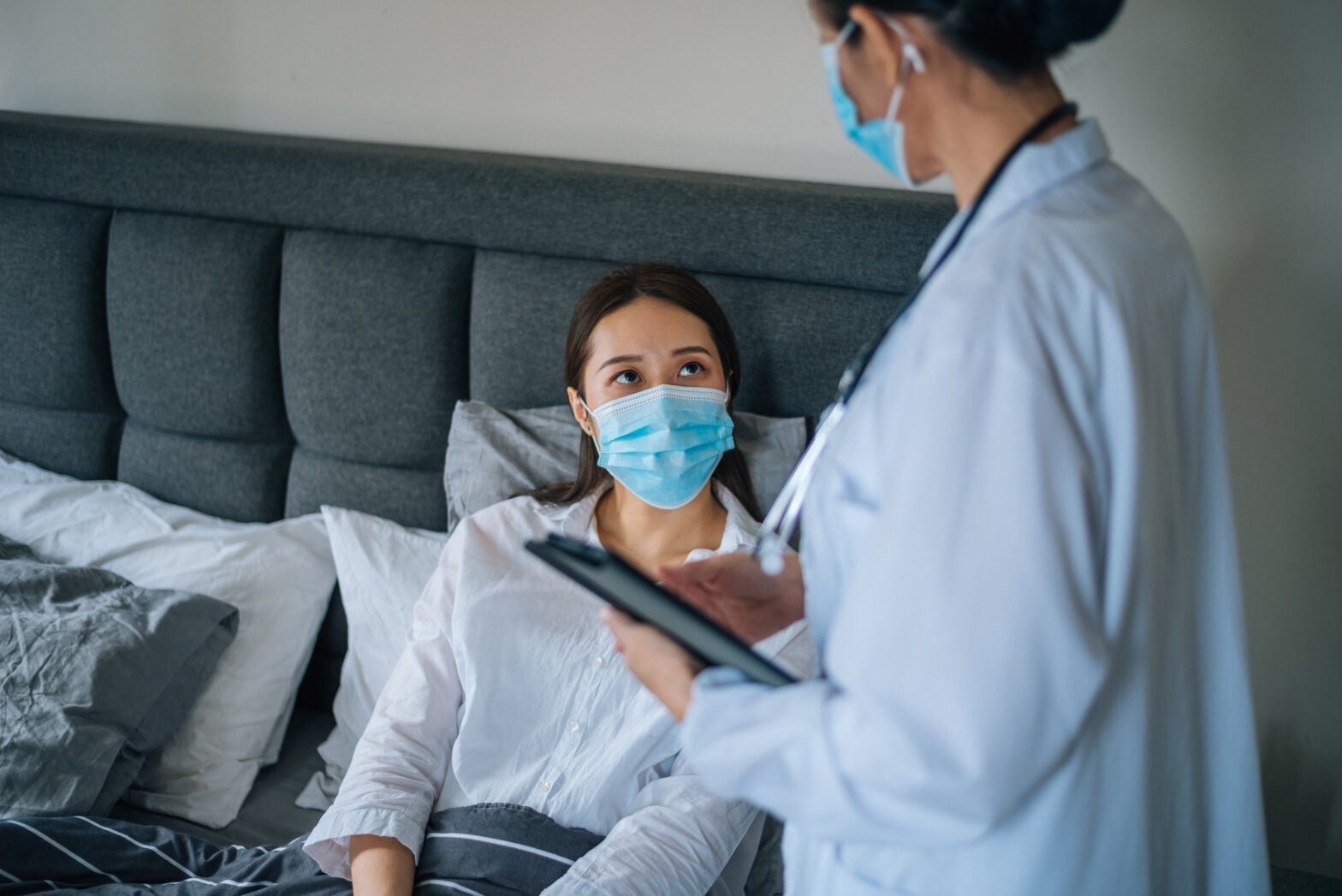Ariadne Labs’ Home Hospital team is testing an innovative model to offer home-based, acute psychiatric care as an alternative to inpatient care for eligible patients.
The U.S. behavioral health care system faces an ongoing capacity crisis. In 2023, the country had 13% fewer state psychiatric beds than it did in 2010. Patients face long waits for needed care — in Massachusetts alone, the number of people awaiting care every day has historically reached up to 700. Many people face extended stays in the emergency department while they await care, sometimes for days, delaying their treatment and potentially worsening their symptoms.
To alleviate these strains and reach more patients, our team has developed an innovative model to deliver safe, effective care at home. The model uses cutting-edge technology combined with specially trained personnel to facilitate this care. We are currently working to launch a pilot randomized controlled trial in collaboration with Brigham and Women’s Hospital (BWH) and BWH Faulkner Hospital to test the feasibility of implementing this care model with eligible patients. Following the pilot, the team aims to continue to improve and refine the model, and hopes to conduct a larger-scale randomized controlled trial.
Developing the Model
Convening Experts in Psychiatric Care
To begin to consider home-based solutions, Ariadne Labs convened an advisory board of leaders in inpatient and outpatient psychiatric care, social workers, nurses, and patient advocates. This advisory board worked with our team of experts in home hospital care to explore the potential of a model of home-based care that could bring patients safe, effective behavioral health care in their homes.
Scoping
In the first year of work, Ariadne Labs worked with the advisory board to consider key questions such as:
- Which diagnoses have the potential to be treated at home?
- Which characteristics may make a patient an appropriate candidate for home-based care?
- Which circumstances might exclude a patient from home-based care?
- What would be an effective care team structure?
- What equipment, technology, and personnel would be needed to treat patients at home?
With the advisory board, we considered different components of the model, created the necessary tools, workflows, and protocols, and held feedback sessions to guide iterations on the model. The first year of the project resulted in the creation of:

Findings from this work suggested that the right combination of tools, technology, and people could offer safe, effective home-based behavioral health care.
Initial Testing
To guide further improvements, the team tested the model through simulations and a rapid-cycle feedback process.
Low-Fidelity Simulations: We held tabletop simulations with clinicians, implementation specialists, and experts in human-centered design. We used these sessions to identify gaps in the workflows, highlight opportunities for tool development and refinement, and ensure continuity of care.
Medium-Fidelity Simulations: We held “dress rehearsal” style simulations with members of the advisory board, implementation and human-centered design specialists, and additional experts in the behavioral health field. The goal of these simulations was to identify any final changes. with patient actors. Equipment, tools, and software were tested to ensure all areas of the care model were ready for high-fidelity simulations.
High-Fidelity Simulations: These simulations took the team to a home setting where we tested the workflows, tools, and equipment. A patient actor feigned an acute psychiatric illness while the clinicians that would make up the behavioral health home hospital team carried out a mock intake, admission, and discharge process. This simulation helped to determine whether the model is feasible, how it would need to be refined ahead of a pilot trial, and what potential gaps/challenges needed to be addressed before the pilot.
Following the simulations the advisory board reviewed the findings to ensure that the approach is safe for patients.
Next Phases: Pilot Trial and Future Work
The team is working to launch a pilot randomized controlled trial in collaboration with Brigham and Women’s Faulkner and Brigham and Women’s Hospitals to test the feasibility of the care model. Should this trial be successful, the team looks forward to continuing to improve the care model and conduct a larger scale randomized controlled trial.
This work is funded by the Thompson Family Foundation.



